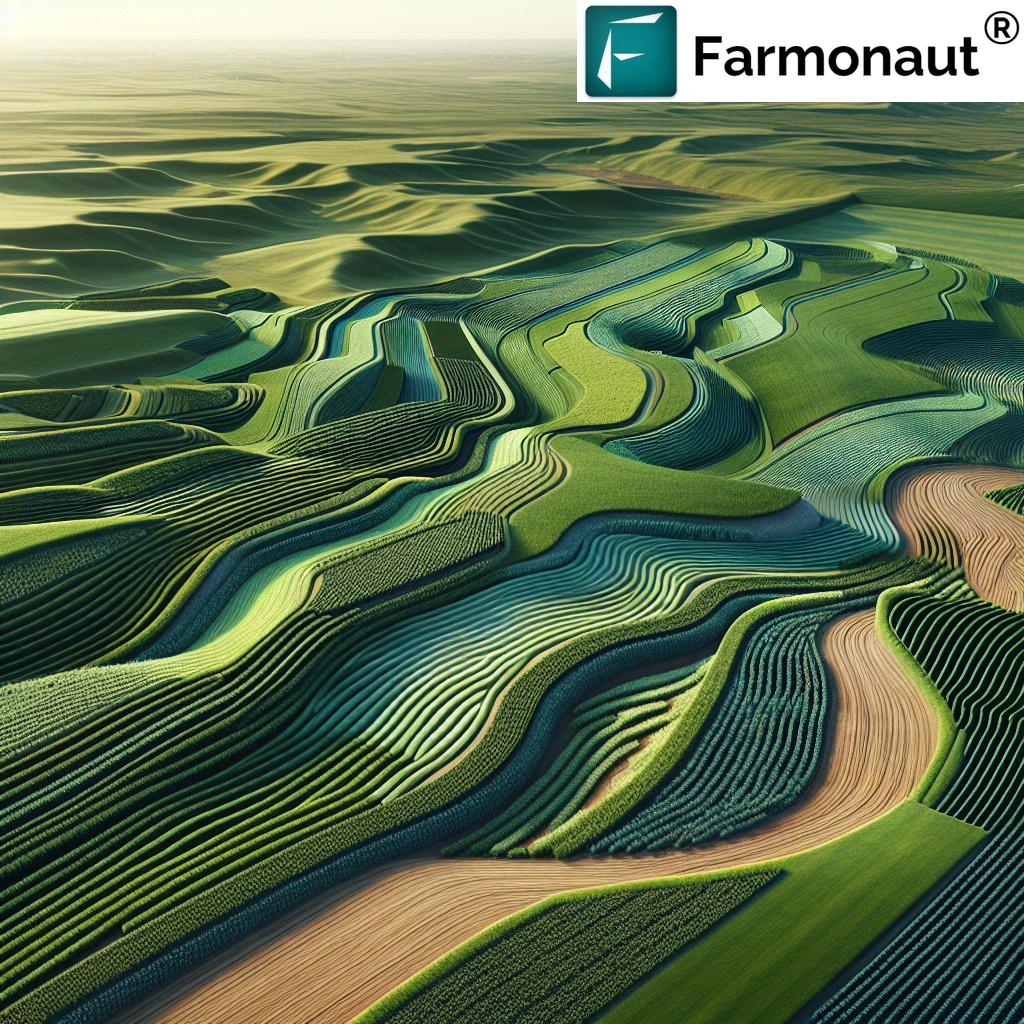Solar Panels on Farmland: 7 Powerful Benefits for 2025
“By 2025, solar panels on farmland can increase farm income by up to 30% through dual land use.”
Introduction: Agrivoltaics and the Future of Sustainable Agriculture
Solar panels on farmland are revolutionizing the way we approach sustainable energy production and land management in 2025. With the world facing growing pressure to meet food demands and urgent renewable energy targets, stakeholders in the agricultural sector are increasingly looking at the integration of solar panels on agricultural land, a practice also known as agrivoltaics.
In recent years, the question “Can you put solar panels on agricultural land?” has shifted from a regulatory curiosity to a mainstream solution addressing efficiency, clean energy, and farm income. Agrivoltaic systems enable the coexistence of crop production and solar power generation without significantly disrupting farming operations. Modern advancements have made this integration more feasible, providing a dual benefit for food and energy security.
The Concept of Solar Panels on Agricultural Land
The installation of solar panels on farmland involves placing photovoltaic (PV) systems on arable land, designed to allow simultaneous crop growth and energy generation. Unlike traditional utility-scale solar farms built on non-productive land, these systems are:
- Elevated or spaced to let sufficient sunlight reach crops below, minimizing the shading impact while optimizing solar energy generation.
- Adapted for both row crops and grazing, allowing agricultural operations to continue without significant interference.
- Integrated through smart mounting systems and PV panel placement, which are increasingly becoming more affordable and efficient due to technological advances in 2025.
This dual-use or multipurpose approach is a core reason why agrivoltaics is now referred to as a promising innovation for enhanced land use efficiency—particularly in regions with limited available arable land. Agrivoltaic systems enable us to double-dip the benefits of land, meeting the global demand for both food and clean electricity generation.
7 Powerful Benefits of Solar Panels on Farmland in 2025
The integration of solar panels on farmland offers a plethora of advantages in 2025, both for farmers and for society as a whole. Below, we deep-dive into the most significant benefits that make solar panels on agricultural land an attractive solution for sustainable agriculture.
“Solar panels can boost crop yields by 10-15% by providing partial shade and reducing water evaporation on fields.”
-
1. Enhanced Land Use Efficiency: Maximizing Productivity
Solar panels on farmland address the critical issue of efficient land use. By combining energy and food production within the same footprint, farmers can escape the traditional “either/or” dilemma between agriculture vs. energy.
- Helps utilize limited or high-value arable land for both crop cultivation and solar energy generation.
- Particularly valuable in regions with high population density and growing demands on limited farmland.
- Allows the deployment of next-generation photovoltaic systems that are elevated or strategically spaced to let sunlight reach the crops.
-
2. Additional Income for Farmers: Diversifying Revenue Streams
Solar panels farmland provides a crucial economic benefit by offering farmers a new stream of income. In times of fluctuating crop prices and climate uncertainties, diversified revenue is more important than ever.
- Leasing land to solar developers can create a stable cash flow for farm owners, often exceeding marginal crop profits per acre — especially with volatile traditional crop markets.
- Self-generation: Farmers can use the electricity produced for their own operations, reducing operational costs for irrigation, cooling, or other on-farm needs, and may even sell excess back to the grid.
For instance, in many cases in 2025, annual returns from solar land leasing can provide up to 30% more income compared to primary crop production alone.
-
3. Microclimate Regulation: Improving Crop Health and Yields
One unique feature of solar panels on agricultural land is their ability to create a beneficial microclimate for certain crops. When properly designed:
- Partial shading reduces soil temperature, lessens heat stress on crops, and minimizes water evaporation.
- This effect is particularly advantageous in hot or drought-prone regions, where water scarcity limits productivity.
- Some shade-tolerant crops exhibit improved yields under these partial shade conditions, and additional water savings of up to 10% are often recorded.
Microclimate regulation also enables the introduction of new crop varieties that may have otherwise failed in direct, full sunlight conditions.
-
4. Renewable Energy Production: Clean Energy for Tomorrow
Installing solar panels on farmland contributes significantly to the global clean energy transition:
- Reduces the reliance on fossil fuels, thus cutting greenhouse gas emissions and helping fight climate change.
- Provides on-site electricity generation for farm operations — making farms less dependent on external energy markets and price volatility.
- Supports regional and national climate goals while reducing the farm’s carbon footprint.
With accelerating climate concerns, such sustainable solutions are increasingly important, and contribute toward a greener, more resilient agriculture sector in 2025.
-
5. Enhanced Climate and Economic Resilience: Buffering Farmers Against Uncertainty
Solar panels on agricultural land not only reduce exposure to volatile crop markets but also:
- Offer a guaranteed energy supply in times of grid unpredictability.
- Create natural wind and hail protection for crops in some configurations, further safeguarding yields.
- Provide steady revenue even in years of poor agricultural output, helping farmers meet operational costs and maintain financial stability.
- Improve farm eligibility for agricultural loans and insurance due to diversified, stable income streams documented via on-farm generation metrics and satellite-monitored yield data.
-
6. Biodiversity and Soil Health: Supporting Environmental Stewardship
When we talk about solar panels farmland with environmental concerns in mind, the benefits extend to:
- Preserved soil structure and less erosion (compared to tilled, fallow, or monoculture land) when mounting systems are thoughtfully designed.
- Potential to integrate habitat corridors or wildflower mixes between panel rows, increasing farm biodiversity.
- Reduced pesticide and water demands due to modified microclimates, with less stress on the broader ecosystem.
- Supports use of carbon footprinting tools to monitor sustainability goals and track greenhouse gas reduction metrics in farm operations.
-
7. Technology Adoption and Modernization: Enabling Smart Farms
Solar panels on farmland in 2025 drive the adoption of smart technologies and data-driven approaches on the farm:
- Integration of battery storage, smart inverters, and digital monitoring systems helps farmers better manage both energy and agricultural operations.
- Enables participation in agrivoltaic research projects, pilot programs, and regional innovation clusters. Satellite-based solutions (like Farmonaut’s) can optimize panel placement and crop monitoring for maximum efficiency.
- Facilitates traceability in food and energy production; platforms like Farmonaut’s blockchain-based traceability tools enhance transparency for regulatory compliance and market confidence.
Comparative Benefits-Impact Table: Solar Panels on Farmland in 2025
| Benefit | Description | Estimated Impact in 2025 | Environmental Advantage |
|---|---|---|---|
| Increased Farm Income | Leasing for solar or on-farm electricity generation adds new revenue streams. | Up to 30% higher overall farm income | Stabilizes rural economies, encourages long-term stewardship |
| Boosted Crop Yields | Partial shading can protect sensitive crops, increasing yields in hot climates. | 10-15% yield increase for certain crops | Reduces water use by 10% and lessens soil degradation |
| Dual Land Use Efficiency | Simultaneous farming and energy production maximizes land value. | ~100% increase in productive land use per acre | Reduces land conversion for separate solar farms, protecting habitats |
| Reduced Carbon Footprint | Replacing fossil energy with solar directly cuts emissions. | Offsets 5 tons CO2/acre annually | Advances national clean energy targets |
| Water Conservation | Shade from panels reduces evaporation and cooling needs. | Saves 10-15% of on-farm water use | Mitigates drought risk and preserves vital aquifers |
| Biodiversity Support | Panel rows/flower corridors support pollinators and wildlife. | Up to 30% higher pollinator activity observed | Promotes ecosystem recovery and soil health |
| Climate and Economic Resilience | Steady power/income buffers farmers against uncertainty. | Reduces income volatility by 20-40% | Builds robust, sustainable rural communities |
Key Challenges & Considerations for Solar Panels on Agricultural Land
While solar panels farmland present tremendous opportunities for enhanced, sustainable agriculture, several challenges require thoughtful management:
-
Crop Compatibility:
Not all crops thrive under partial shade. Continued research into which crops and varieties respond well to agrivoltaic conditions—as well as ongoing field trials—is essential to maximize both agriculture and energy production.
-
Land Use Regulations and Zoning:
Legal considerations remain for installing solar panels on agricultural land. Regulations often vary by country/region. Advocating for policy changes to support dual land use rather than restrict it is vital for wider adoption in 2025.
-
Installation and Maintenance Costs:
Though costs are falling over time, elevated or adjustable mounting systems for agrivoltaics can be more expensive to install than conventional ground-mounted PV. However, lower costs in technology, easier financing options, and large-scale farm management tools can help improve the return on investment over time.
-
Soil Compaction and Farm Operations:
PV mounting structures, if poorly designed, can interfere with traditional farm machinery access and lead to soil compaction. Innovations in system design, as well as satellite-based assessments, help ensure that agriculture operations remain streamlined.
-
Balancing Energy and Agriculture:
Ensuring year-round energy yield without negatively impacting sensitive planting and harvesting schedules requires advanced planning—supported by crop modeling, digital placement tools, and ongoing monitoring.
Technological Innovations and Policy Trends Shaping Solar Panels on Farmland in 2025
Agrivoltaic systems in 2025 benefit from major leaps in technology and a shifting policy landscape:
Cutting-Edge Technology Enabling Agrivoltaics
- Bifacial Solar Panels: Capture sunlight from both sides, maximizing power generation and making more efficient use of the light reflected by crops and soil.
- Adjustable, Elevated, and Spaced Mounts: Allow optimal sun exposure for crops underneath while adapting to changing seasonal light angles.
- Robotics & AI-Based Operations: Panel cleaning robots and remote diagnostics (supported by satellite data) reduce manual maintenance costs and downtime.
- Battery Storage Systems: Enable farms to store excess solar electricity generated during peak sun hours, balancing intermittent solar energy with constant agricultural demands.
- Digital Mapping & Crop Monitoring: Satellite imagery and AI tools support panel placement, monitoring, crop health, and operational efficiency.
Evolving Policy and Regulatory Support
- Streamlined Land-Use Regulations: As governments recognize the importance of dual land use, more incentives and relaxed zoning restrictions are emerging to support solar panels on agricultural land.
- Research Grants & Pilot Programs: Public funding in 2025 increasingly backs innovative, dual-use approaches—accelerating agrivoltaic research and adoption.
- Carbon and Sustainability Reporting: Businesses and farms using carbon footprinting and sustainability tools will be best positioned to meet evolving market, regulatory, and consumer demands concerning environmental responsibility.
- Energy Infrastructure Modernization: Connected microgrids and local balancing markets allow farms to maximize off-grid or semi-grid usage, selling excess energy while ensuring their own energy resilience.
The Growing Role of Digital and Satellite Technologies
In addition to physical hardware innovations, satellite and digital monitoring are crucial in optimizing agrivoltaic systems. Farmonaut’s satellite-driven insights for crop health, soil moisture, and real-time weather allow farm decision-makers to:
- Identify shade-tolerant crop zones and ideal PV placement, boosting productive capacity on every acre.
- Automate data-driven risk management, enabling precision farming while reducing manual labor and costs.
- Verify farm operations and performance for loans, insurance, and compliance via data-backed evidence—a feature especially helpful to both farmers and financial institutions.
- Access fleet management, resource tracking, and traceability solutions, empowering integrated, modern agriculture operations.
For details on integrating these solutions, explore our API and API documentation.
How Farmonaut Satellite Technology Supports Agrivoltaics
As a leader in satellite-based agricultural intelligence, we at Farmonaut empower the solar panels farmland revolution by providing:
- Multispectral Monitoring: Our systems monitor crop health (NDVI, NDMI), soil moisture, and microclimate parameters—all critical for optimizing crop and solar co-production. Precise, reliable data helps farmers choose optimal panel layouts and match shade-tolerant crops to appropriate zones.
- Real-Time Advisory: With Jeevn AI-based advisory, users receive weather alerts, field-level insights, and strategy recommendations, enabling quick, actionable decisions that reduce costs and increase yields in complex agrivoltaic setups.
- Blockchain Traceability: Our traceability solutions let growers and energy producers maintain transparent, tamper-proof records for both food and electricity output, supporting regulatory requirements and building market trust.
- Environmental Impact Tracking: Carbon footprinting tools measure emissions offsets from adopting solar panels on farmland, supporting farm sustainability reporting, branding, and regulatory compliance.
- Large Scale Management: Our tools for large-scale farm management offer integrated fleet, field, and resource oversight, making the leap from traditional to hybrid farms seamless.
Video Insights: Solar, Agrivoltaics, Farming, and Satellite Tech
Watch these insightful videos to understand the real-world implications of solar panels on agricultural land, agrivoltaics, precision agriculture, carbon management, and the role of satellite technology in sustainable farming.
Frequently Asked Questions (FAQ) on Solar Panels on Farmland
Q1. Can you put solar panels on agricultural land?
Yes, it is increasingly common to install solar panels on farmland using agrivoltaic systems. Modern systems are designed to be minimally disruptive, allowing the coexistence of crop cultivation, livestock grazing, and renewable energy generation. Regulatory requirements, however, can vary by region, so always check local land-use zoning and agricultural policy.
Q2. What types of crops benefit most from partial shading beneath solar panels?
Shade-tolerant crops such as leafy greens (lettuce, spinach), some root vegetables (beets, radishes), certain berries, and forage crops have shown the best productivity improvements under agrivoltaic systems. Ongoing research and satellite data analysis help identify local varieties best suited for solar-shaded microclimates.
Q3. What is the estimated ROI for farmers installing solar panels on their land in 2025?
ROI depends on location, installation costs, power purchase agreements, and crop selection. However, average projections suggest up to 30% increased farm income from leasing or self-generation, with many systems paying back their investment within 5–9 years depending on incentives, yields, and energy prices.
Q4. How do solar panels impact crop health and soil?
When properly designed, solar panels help moderate soil temperature, reduce water evaporation, and even shield crops from extreme weather. Compaction or shading issues can be minimized by using elevated, spaced mounts and regular field monitoring, often with the help of satellite imagery and digital tools.
Q5. What digital tools can help optimize solar panel placement on farmland?
Platforms that use satellite imagery, IoT sensors, and AI tools (such as Farmonaut’s services) are increasingly used for crop and land monitoring, panel placement modeling, and predictive yield analysis. These solutions enable data-driven decisions, maximizing both energy and agricultural output.
Q6. Can I use solar panels for both energy generation and selling power back to the grid?
Yes, most modern solar installations (subject to regional regulations and interconnection agreements) enable farmers to use the energy generated for on-farm operations while selling excess power to the grid through net metering or feed-in tariffs, further improving income and sustainability.
Conclusion: Solar Panels on Farmland as a Cornerstone of Sustainable Agriculture in 2025
Solar panels on farmland represent a transformative solution for meeting energy needs, securing rural income, and enhancing climate resilience — all without sacrificing food security or environmental integrity. As we move further into 2025 and beyond, the integration of solar technology in agriculture will continue to emerge as a best practice for maximizing land productivity, stabilizing farm economics, and supporting global sustainability goals.
With the ongoing support of satellite-driven platforms like Farmonaut—offering real-time crop and soil monitoring, blockchain-based traceability, and resource management tools—farmers and agribusinesses gain the actionable intelligence they need to optimize dual land use and thrive in an era of accelerating change.
As innovations in technology, policy, and digital tools continue to accelerate, we expect solar panels on agricultural land to play a pivotal role in shaping the future of farming, food production, and rural energy for years to come.
Farmonaut Subscription Plans: Affordable Access to Satellite Intelligence for Every Farm
Empower your farm’s performance, optimize agrivoltaic systems, and gain deep, actionable insights with flexible Farmonaut subscription plans. Live monitoring, smart analytics, and digital traceability are now within reach for farms of all sizes.










